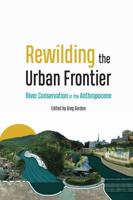Publisher's Synopsis
Jharia coalfield in the State of Jharkhand is the prime coking coal reserve in the country. The coal field lies in the Damodar River Valley, and covers about 280 square km, but due to unscientific mining which resulted in severe land degradation. On a rough estimate about 75 percent of the total coal reserves in the coalfield are still available and there is a need for long-term planning. Unfortunately, coal mining has left a severe impact on the land environment. In the present study, extensive use of remote sensing imagery has been used to find the impact of mining in the land environment. Change detection in land use and land cover has been carried out by digital comparison method using satellite image of 2004 and 2009 of Indian Remote Sensing Satellite. On the other hand, Due to a lot of activities in the coalfield many problems generate in the environment, from those, one is land degradation, due to that a large part of land is damaged, a huge part of agriculture land and settlement land also degraded. So selected study area, Jharia Coalfield is suitable for the study of Land Capability Classification.











